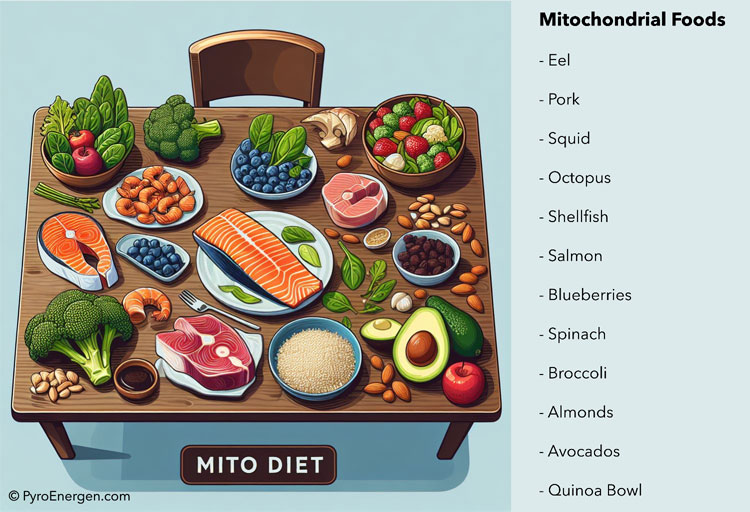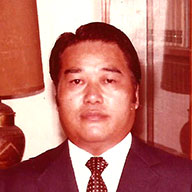Fight Tiredness: Here Are Secret Stamina-Boosting Techniques
Updated: December 8, 2023
Around the time you hit 40, your energy levels aren't what they used to be. You may notice yourself thinking things like, "I've lost my energy..." or "I can't push myself as hard anymore..." But don't worry, I have good news for all of you who easily get tired!
The key to having a body that doesn't easily tire is none other than stamina, controlled by the tiny powerhouse inside your cells, the "Mitochondria". Increasing the number of mitochondria is the key to improving vitality and endurance!
Mitochondria are like little "engines" inside your cells that power your body's movements. As we age, the number of mitochondria decreases, and we lose the power we had in our younger days.

But don't worry, there's good news. It turns out that deliberately creating a state of "energy deficiency" flips the switch in your cells to produce more mitochondria.
For instance, just one minute of "slightly challenging" exercise is enough. Additionally, mitochondria also multiply when you cut back on calories or extend your fasting time.
Plus, you can combine these techniques with "real stamina-boosting foods" that are highly effective for bodies feeling the summer fatigue!
Boost Your Stamina with "Slightly Challenging Exercise"!
The key to increasing stamina, which is synonymous with endurance, is to increase the number of mitochondria inside our cells. Mitochondria use sugars and fats obtained from our diet, as well as oxygen obtained through respiration, to produce a substance called ATP (adenosine triphosphate). ATP is the "energy source" that powers our body's movements. It is essential for the functioning of our muscles in our limbs and heart, as well as for brain activity, and it plays a significant role in our stamina.

Mitochondria tend to decrease after your 30s. However, by incorporating a certain activity into your daily life, you can actually increase their quantity. That activity is engaging in exercise that you find slightly challenging.
Inside our cells, there are enzymes that monitor the level of ATP. In cases like normal walking, where not much energy is being used, there's no shortage of ATP, so this enzyme remains inactive. But when you engage in slightly tougher exercise, ATP becomes scarce, and the enzyme's function (the switch) gets turned ON! The mitochondria kick into action, starting to divide and multiply, all in an effort to produce more ATP.
Just Repeat for 1 Minute Each!
As an example of "slightly challenging" exercise, let's start with introducing "interval brisk walking". This training method involves walking fast for 3 minutes, then walking slowly for 3 minutes, repeated 5 times (totaling 30 minutes) and should be done for at least 4 days a week. This method is a way to "increase muscle strength", but it turns out it also has an effect on "boosting stamina (endurance)".
However, many people may find it difficult to spare 30 minutes a day due to busy work and household chores. Don't worry! The "switch" that increases mitochondria turns ON with just 1 minute of slightly challenging exercise! You can take short breaks during your commute or shopping and briskly walk for 1 minute at a time, or take the stairs instead of using the elevator. The key is to put a load on your body that makes you think, "It's a little tough." You don't need to push yourself to the point of exhaustion.

If going outside is inconvenient, you can even do 10 squats at home. Once the switch is ON, its effect lasts for a while. By repeating these exercises frequently, you can steadily increase your mitochondria and achieve improved stamina, which means a body that doesn't tire easily. According to a research conducted by a professor in Shinshu University in Japan, a total of 60 minutes of exercise per week has the following effects:
After 1 week: You'll sweat more easily and be less prone to summer fatigue.
After 2 weeks: You may lose 1 kilogram in weight (for those who are overweight).
After 1 month: Walking becomes easier.
After 2 months: Your body becomes less prone to fatigue.
★ During hot days, if you're planning to do brisk walking or intense exercise, opt for the cooler times of the day, like early morning or evening.
Increasing Mitochondria through Diet
You can increase the number of mitochondria by practicing "calorie restriction" or by experiencing "a sense of hunger". This is thought to be because of something called "longevity genes" that come into play. On the other hand, overeating leads to your mitochondria getting more sugar and fats than they need to produce ATP, which can lead to "metabolic syndrome".
However, if you're 65 or older, you often run the risk of having too little stamina due to being too thin. So, making sure you get proper nutrition is important.

There are also nutrients that can help increase your mitochondria and aid their function. "Taurine", found abundantly in squid, octopus, and shellfish, is believed to help boost mitochondria. Read my article "Health Benefits of Taurine". On the other hand, "B-vitamins" found in eel, pork, and "iron" found in liver, among others, assist your mitochondria in producing ATP.
In conclusion, consistent application of these mitochondrial-maximizing techniques, together with your regular dose of PYRO-ENERGEN electrostatic therapy, will help turn back the clock, delivering lasting vitality and youthful energy.
6 Important Things to Remember
- Mitochondria are the powerhouses inside your cells that give you energy and stamina. As you age past 30, mitochondria decline, leading to fatigue.
- Just 1 minute of slightly challenging exercise like brisk walking or squats flips the switch to increase mitochondria production and boost stamina.
- Interval training (alternating brisk walking and slower walking) 4x a week for 30 mins maximizes mitochondria multiplication for sustained energy.
- Calorie restriction and intermittent fasting prompt longevity genes to produce more mitochondria. But ensure proper nutrition if over 65.
- Nutrients like taurine, B vitamins, and iron assist mitochondrial function and ATP energy synthesis. Eat shellfish, pork liver, and eel.
- Research shows just 60 mins total of exercise per week can increase energy, reduce fatigue, improve walking, and make your body less prone to tiring.
Reprint Rights: You may reprint this article within your website, blog, or newsletter as long as the entire article remains the same as well as the “About the Author” box.



 Junji Takano is a Japanese health researcher involved in investigating the cause of many dreadful diseases. In 1968, he invented PYRO-ENERGEN, the first and only electrostatic therapy machine that effectively eradicates viral diseases, cancer, and diseases of unknown cause.
Junji Takano is a Japanese health researcher involved in investigating the cause of many dreadful diseases. In 1968, he invented PYRO-ENERGEN, the first and only electrostatic therapy machine that effectively eradicates viral diseases, cancer, and diseases of unknown cause.


